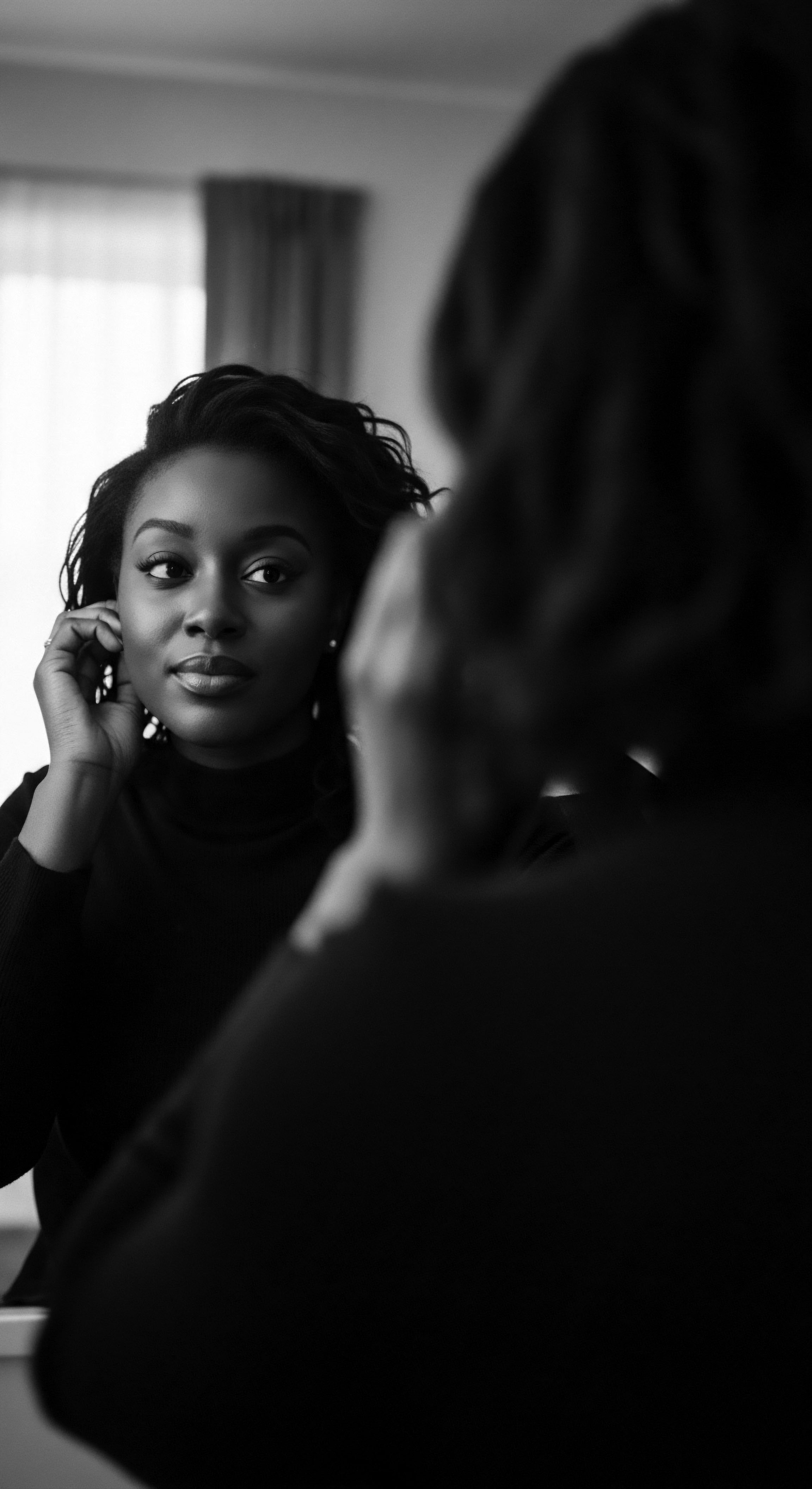
Fundamentals
The conversation surrounding scalp irritation, particularly as it pertains to hair steeped in ancestral legacies, is a profound meditation on the scalp’s delicate ecosystem. Understanding this phenomenon necessitates a thoughtful approach, recognizing that what presents as physical discomfort often echoes deeper narratives of care, tradition, and adaptation. At its most straightforward, Scalp Irritation represents a spectrum of unpleasant sensations experienced on the epidermal canvas of the head.
These sensations often include itching, burning, tingling, dryness, or a general feeling of unease. It is the skin’s way of communicating distress, a whisper that can sometimes swell into a clamor, urging attention and remedy.
This initial unrest can manifest visually through signs like redness, flaking, or even small bumps, each a visible testament to an underlying imbalance or external assault. The epidermal layer of the scalp, a living shield, harbors countless nerve endings and hair follicles, making it acutely sensitive to environmental shifts and the products we apply. When this intricate balance is disrupted, irritation begins its subtle unfolding.
For those with hair that coils and bends, possessing the inherent beauty of textured strands, the journey of scalp irritation often carries additional layers of historical context and lived experience. The unique architecture of these follicles, the density of the hair, and the traditional styling practices passed down through generations all play a part in shaping this experience.
Scalp irritation is the scalp’s communication of distress, manifesting as discomfort and visible signs, often carrying unique historical context for textured hair.
Historically, communities across the diaspora, particularly those with hair textures of profound versatility, have navigated challenges to scalp wellness with ingenuity and reverence. The pursuit of scalp comfort was not merely a cosmetic concern; it was intrinsically linked to overall well-being, spiritual practices, and communal identity. From ancient formulations derived from botanicals to the communal rituals of hair grooming, the wisdom of our forebears often centered on nurturing the scalp as the very ground from which healthy, vibrant hair could spring. This ancestral understanding offers a foundational lens through which to comprehend the elemental meaning of scalp irritation today.

The Skin’s Quiet Communication
The skin of the scalp, thicker than that on other parts of the body, nonetheless responds to various stimuli with a language of sensation. Its primary function extends beyond simply anchoring hair; it acts as a barrier, regulating temperature and protecting the delicate brain beneath. Within its layers reside sebaceous glands, producing oils that lubricate the hair and skin, and a microbiome—a vibrant community of microorganisms that, when in balance, support the scalp’s health.
Disruption to this delicate microbial harmony can trigger irritation. Consider the gentle rhythm of traditional hair washing practices, often employing natural clays or saponifying herbs; these methods were designed not to strip, but to cleanse with a respect for the scalp’s innate balance, minimizing the very irritations that overly harsh modern agents sometimes induce.
The meaning of scalp irritation, from this rudimentary perspective, is a signal ❉ a call for attention, a demand for rebalancing. It points to a divergence from the scalp’s optimal state, whether caused by internal factors like stress or diet, or external ones such as harsh chemicals, excessive tension from styling, or environmental pollutants. The initial sensations, though subtle, should be heeded, as they often precede more pronounced symptoms.

Elementary Causes and Their Roots
Understanding scalp irritation at its elemental level requires an acknowledgment of its common instigators. These vary, yet often coalesce around themes of product incompatibility, environmental stressors, or physiological responses.
- Dryness ❉ An insufficient production of natural oils or the stripping action of harsh cleansing agents leaves the scalp vulnerable, leading to flaking and itchiness. In many ancestral communities, practices like regular oiling with shea butter or coconut oil provided natural emollience, acting as a prophylactic measure against environmental dryness.
- Allergic Reactions ❉ Certain ingredients in hair products—fragrances, preservatives, dyes—can trigger contact dermatitis, an inflammatory response characterized by itching and redness. This underscores the ancestral practice of using pure, unadulterated ingredients, often harvested directly from the earth, which inherently reduced exposure to synthetic irritants.
- Microbial Imbalance ❉ An overgrowth of certain yeasts or bacteria, typically part of the scalp’s natural flora, can lead to conditions like dandruff or seborrheic dermatitis, both common sources of irritation. Traditional herbal rinses or plant-based cleansers often possessed natural antimicrobial properties, aiding in maintaining a harmonious scalp environment.
The definition of scalp irritation, when viewed through this foundational lens, becomes an invitation to listen to the body’s wisdom, a wisdom that echoes in the ancestral ways of tending to our crowns.
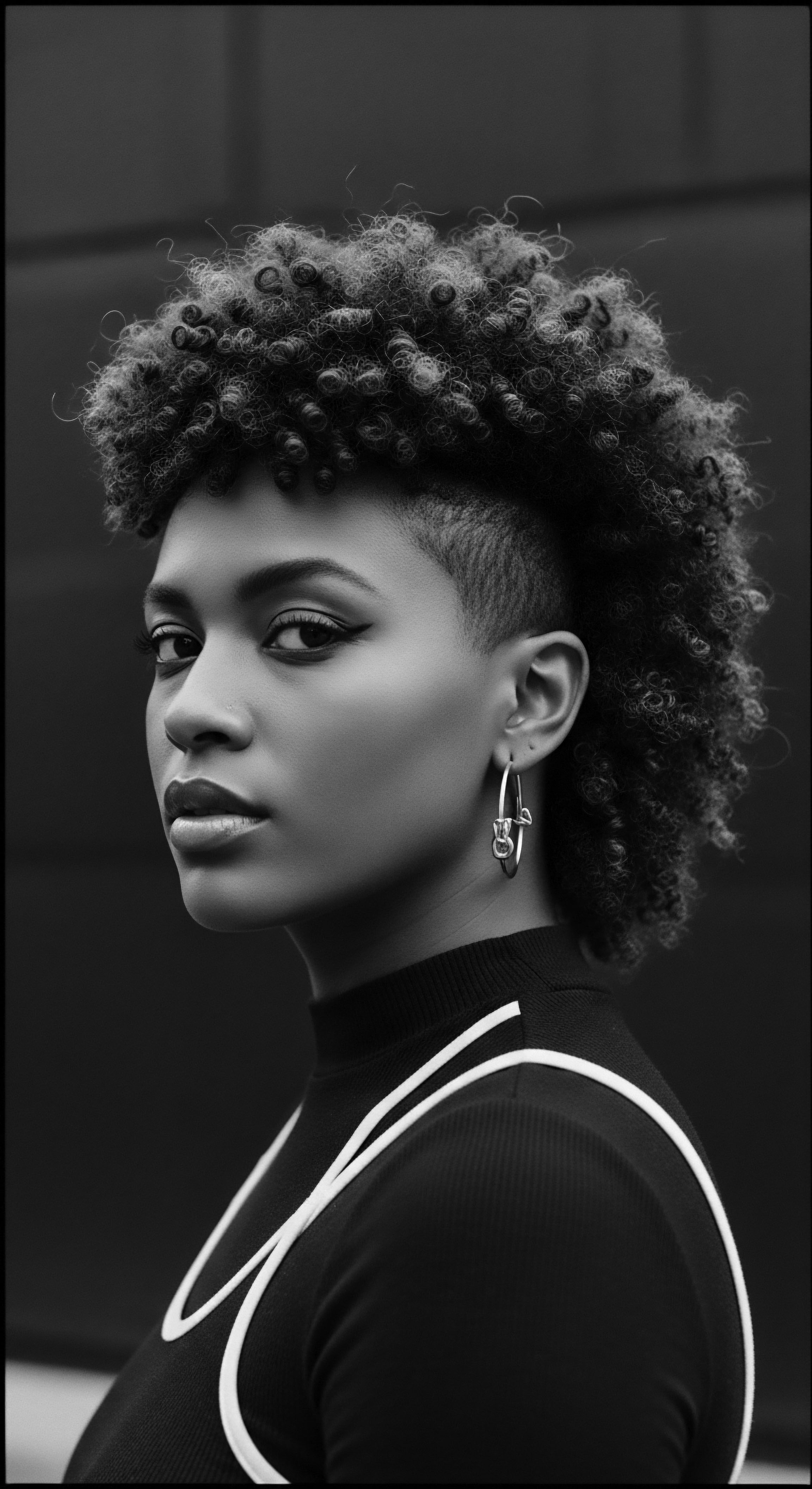
Intermediate
Moving beyond the foundational signals, an intermediate comprehension of Scalp Irritation invites a deeper inquiry into its underlying mechanisms and broader implications, particularly within the rich context of textured hair heritage. Here, the explanation extends beyond mere symptoms, delving into the nuanced interplay of biological predisposition, environmental factors, and the profound influence of cultural hair practices. The significance of scalp irritation for those with coiled, kinky, or wavy strands is heightened by the unique anatomical features of their hair follicles and the historical trajectories of hair care in diverse communities. It is a dialogue between the individual’s biology and the communal narratives woven into their very being.
For generations, the care of textured hair has been an intricate art, passed down through the hands of elders and imbued with purpose. These practices, often born of necessity and deep reverence for ancestral wisdom, have shaped the scalp’s resilience. Understanding scalp irritation in this intermediate phase involves recognizing that external pressures, such as societal beauty standards that often favored straightened hair, historically led to practices that sometimes compromised scalp health.
The use of harsh chemicals, excessive heat, and tight tension styles, while often a response to socio-cultural pressures, introduced stressors unknown to earlier ancestral methods. This cultural imposition created a new set of challenges for scalp wellness, adding a layer of complexity to its current meaning.
Understanding scalp irritation for textured hair involves a dialogue between biology, environment, and cultural practices, shaped by historical beauty standards.
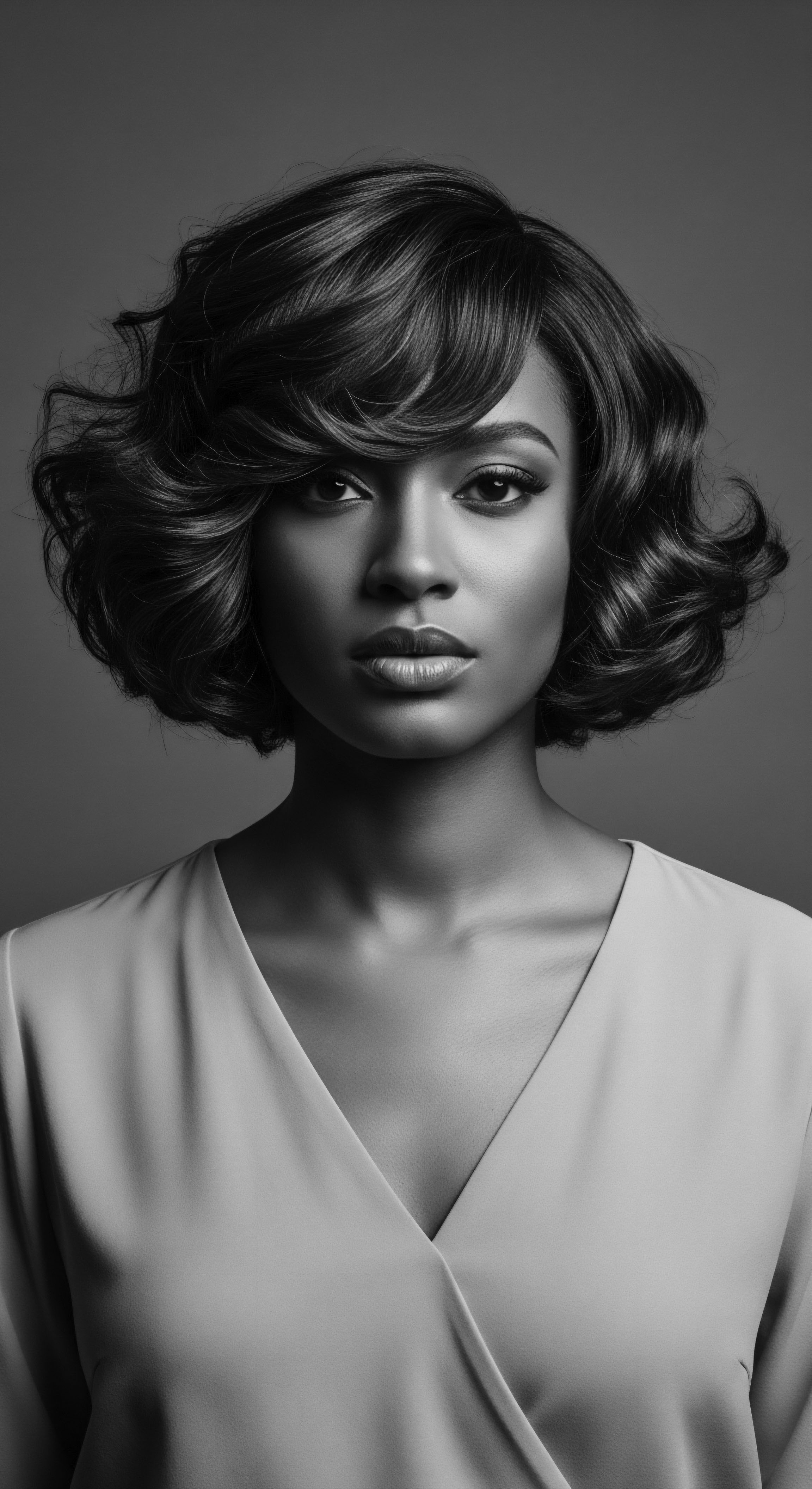
The Intricate Follicle and Its Sensitivities
The hair follicle itself, a dynamic mini-organ nestled within the scalp, plays a central role in this expanded interpretation. For textured hair, follicles are often curved or elliptical, leading to hair shafts that emerge with distinct bends and turns. This unique morphology, while giving rise to glorious coils, can also render the scalp more susceptible to specific forms of irritation.
The natural oils (sebum) produced by the scalp travel down the hair shaft with greater difficulty on highly coiled strands, potentially leading to dryness at the scalp level even when oil production is adequate. This inherent characteristic means that care regimens must be thoughtfully adapted to ensure even distribution of moisture and protection, a lesson understood intuitively by ancestral practitioners who routinely oiled the scalp directly.
Furthermore, the density of textured hair can create a microclimate on the scalp, retaining heat and moisture. While beneficial for conditioning, this environment can also become a breeding ground for certain microorganisms if not properly managed through consistent, gentle cleansing and ventilation. The interpretation of scalp irritation in this context highlights the continuous need for mindful care that honors both the biological particularities of textured hair and the environmental conditions it encounters.

Environmental and Cultural Influences
The environment, both natural and constructed, significantly impacts scalp health. Humidity levels, pollution, and even the hardness of water used for washing can all contribute to scalp distress. Yet, the human-made environment, especially as it relates to hair care products and styling tools, introduces a more direct and often more potent source of irritation.
Consider the historical trajectory of styling practices within Black and mixed-race communities. The desire for versatility, expression, and conformity has led to a rich array of styles, some of which, when not executed with careful consideration for scalp health, can induce considerable irritation.
- Tension Styles ❉ Braids, twists, and locs, when installed too tightly, exert considerable traction on the hair follicles. This constant pulling can lead to conditions like Traction Alopecia, a form of hair loss caused by chronic pulling, which often begins with intense scalp irritation, redness, and inflammation around the follicles. Ancestral braiding practices often prioritized comfort and longevity, with a deep understanding of scalp integrity.
- Chemical Processing ❉ Hair relaxers, perms, and dyes have been instrumental in shaping modern hair aesthetics, but their chemical composition can be highly caustic. Repeated application, especially on sensitive scalps or when not applied with professional expertise, can cause chemical burns, extreme dryness, and persistent inflammation. The cultural pressure to conform to straightened hair ideals for economic or social advancement often pushed individuals towards these treatments, sometimes at the expense of scalp wellness.
- Heat Application ❉ Flat irons, curling irons, and blow dryers, while offering styling flexibility, can also dehydrate the scalp and hair, leading to dryness and irritation. The high temperatures can disrupt the scalp’s protective barrier, making it more vulnerable to external irritants.
The meaning of scalp irritation, therefore, is not solely a dermatological concern; it reflects the complex interplay of heritage, self-expression, and societal pressures that have shaped the hair journeys of countless individuals. It speaks to the resilience of those who have adapted their practices, always seeking beauty and comfort while navigating historical constraints.
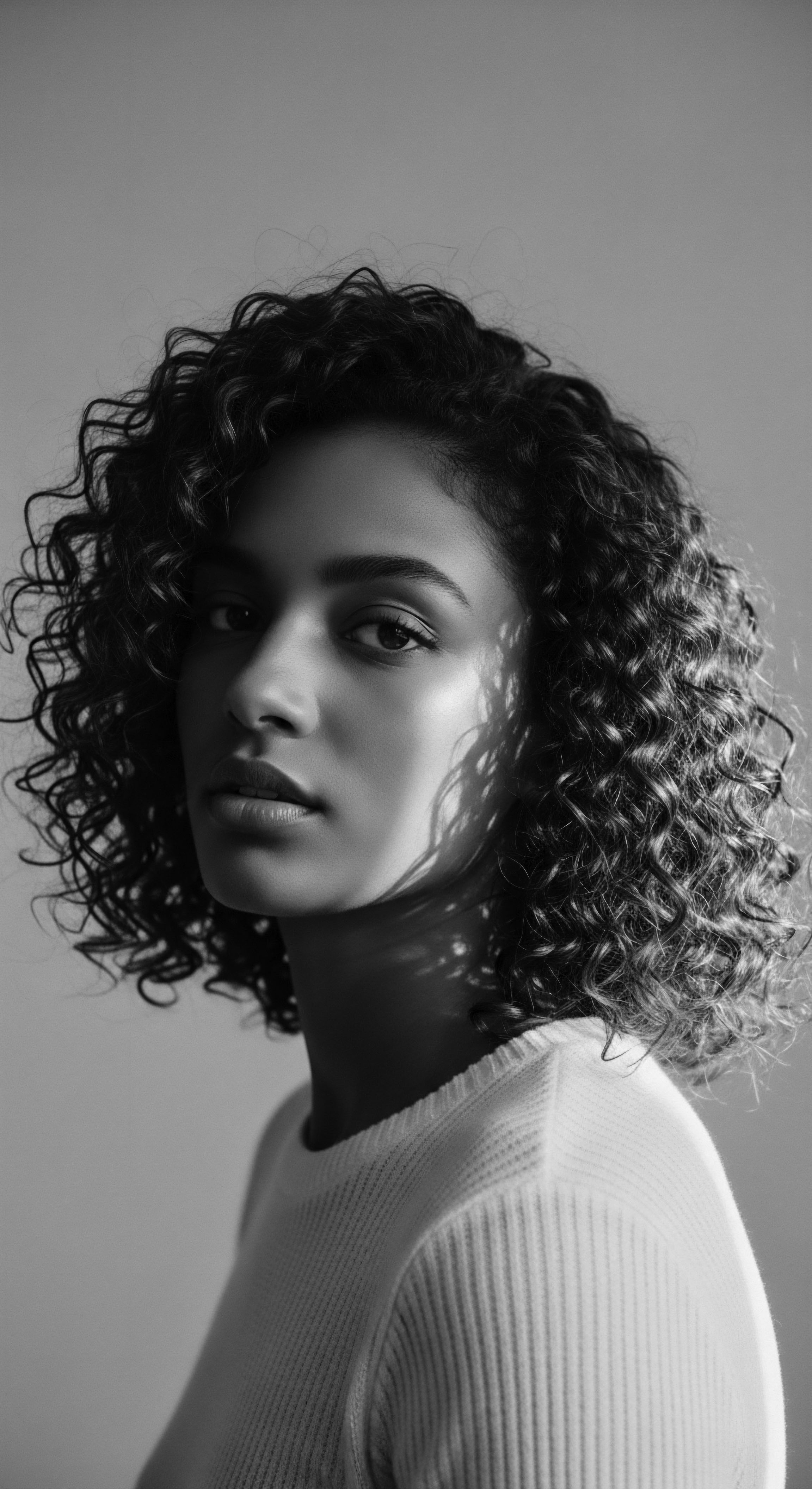
Recognizing the Signs ❉ Beyond the Surface
An intermediate understanding involves discerning the subtle differences between various irritants and their specific manifestations.
| Cause Category Dryness/Lack of Moisture |
| Ancestral Understanding & Practices Recognized through brittleness and flaking; addressed with natural oils (e.g. castor, coconut, shea butter) and water-based infusions to maintain pliability. |
| Modern Scientific Interpretation Understood as impaired barrier function (transepidermal water loss); mitigated with humectants, emollients, and occlusives to restore hydration and lipid layers. |
| Cause Category Inflammation/Itch |
| Ancestral Understanding & Practices Associated with imbalances or "heat" in the body; treated with soothing plant extracts (e.g. aloe vera, peppermint, neem) and anti-inflammatory herbal rinses. |
| Modern Scientific Interpretation Identified as an immune response to irritants or allergens (e.g. contact dermatitis, seborrheic dermatitis); managed with anti-inflammatory agents, corticosteroids, or antifungals. |
| Cause Category Breakage/Tension |
| Ancestral Understanding & Practices Understood as a result of improper handling or excessive strain; practices emphasized gentle detangling, loose braiding, and protective styles that honored hair integrity. |
| Modern Scientific Interpretation Recognized as mechanical stress on the hair shaft and follicle (e.g. traction alopecia); managed through stress reduction, gentle handling, and appropriate tension in styling. |
| Cause Category The enduring quest for scalp wellness shows a continuous thread of wisdom, spanning from intuitive ancestral remedies to precise scientific interventions. |
This level of understanding prompts individuals to become more attuned to their scalp’s unique needs, to question product ingredients, and to adopt practices that honor the scalp’s delicate ecosystem. It is a journey of informed self-care, deeply intertwined with respect for the heritage of textured hair.

Academic
An academic engagement with Scalp Irritation transcends superficial explanations, inviting a profound exploration of its complex pathophysiology, its epidemiological distribution, and its deep sociological and historical roots within the Black and mixed-race textured hair experience. Here, the meaning of scalp irritation expands from a mere dermatological symptom to a critical indicator of historical beauty paradigms, healthcare disparities, and the persistent legacy of cultural adaptation. This is an inquiry grounded in scientific rigor and anthropological sensitivity, seeking to unearth the interconnected incidences that have shaped scalp health across generations, especially within communities whose hair is both a crown and a chronicle.
The scholarly interpretation of scalp irritation in these populations requires acknowledging the unique biophysical characteristics of textured hair. The coiled morphology of the hair shaft and the inherent curvature of the follicle, while responsible for the aesthetic diversity of these hair types, also present distinct dermatological considerations. For instance, the tight curl patterns can impede the uniform distribution of sebum along the hair shaft, often resulting in natural dryness at the scalp level, which then predisposes it to conditions such as xerosis and subsequent irritation.
Furthermore, the higher density of hair often seen in these textures can create a warmer, more occlusive microclimate on the scalp, which, if not managed with diligent hygiene, can favor the proliferation of lipophilic yeasts like Malassezia furfur, contributing to seborrheic dermatitis and its associated pruritus and inflammation. This intrinsic biological predisposition, when coupled with external factors, paints a comprehensive portrait of the challenges.
Academic analysis reveals scalp irritation as a complex interplay of biophysical factors, historical beauty practices, and healthcare disparities for textured hair.

The Socio-Historical Nexus ❉ Relaxers and Scalp Trauma
A particularly poignant example of how cultural practices intersect with scalp irritation—and one that allows for deep, original exploration—is the historical and ongoing impact of chemical hair relaxers within Black communities. These alkaline agents, designed to permanently straighten hair, have been a pervasive presence for over a century, profoundly shaping beauty standards and self-perception. Their adoption, often propelled by economic and social pressures to conform to Eurocentric aesthetics, came with significant dermatological consequences.
Scientific literature provides compelling evidence of the profound and often chronic irritation caused by these treatments. Studies have consistently documented a high incidence of scalp burns, chemical contact dermatitis, and subsequent scarring alopecia among individuals who regularly use relaxers. For example, in a seminal review by McMichael and Levy (2014) on the dermatological implications of hair care practices in women of color, the authors delineate how chemical relaxers, particularly those containing sodium hydroxide (lye), frequently lead to immediate chemical burns and erosions on the scalp. These acute injuries, though often perceived as an unfortunate but common side effect, represent a significant form of scalp irritation that can lead to long-term sequelae such as permanent hair loss due to follicular destruction and the development of Folliculitis Decalvans or Central Centrifugal Cicatricial Alopecia (CCCA), conditions characterized by persistent inflammation and irreversible scarring.
The long-term consequences of these chemical interventions extend far beyond momentary discomfort. Chronic irritation, when accompanied by repeated micro-trauma, can initiate a cascade of inflammatory responses, leading to irreversible fibrotic changes around the hair follicle. This process, often silent in its early stages beyond initial irritation, represents a deep and often unacknowledged historical burden on scalp health within these communities.
The phenomenon is not merely a clinical observation; it is a narrative deeply embedded in the lived experiences of generations. The pervasive use of relaxers, often initiated at a young age, meant that scalp health was routinely compromised in the pursuit of a societal ideal. This established a pattern where chronic scalp irritation became normalized, dismissed as the price of beauty or a minor inconvenience, rather than a serious dermatological concern deserving of medical attention.
This normalization, in turn, contributed to delays in seeking treatment and a diminished understanding of the long-term ramifications, perpetuating a cycle of scalp trauma. The systemic neglect of these specific dermatological issues in broader medical discourse, until relatively recently, further underscores the academic significance of this historical context.
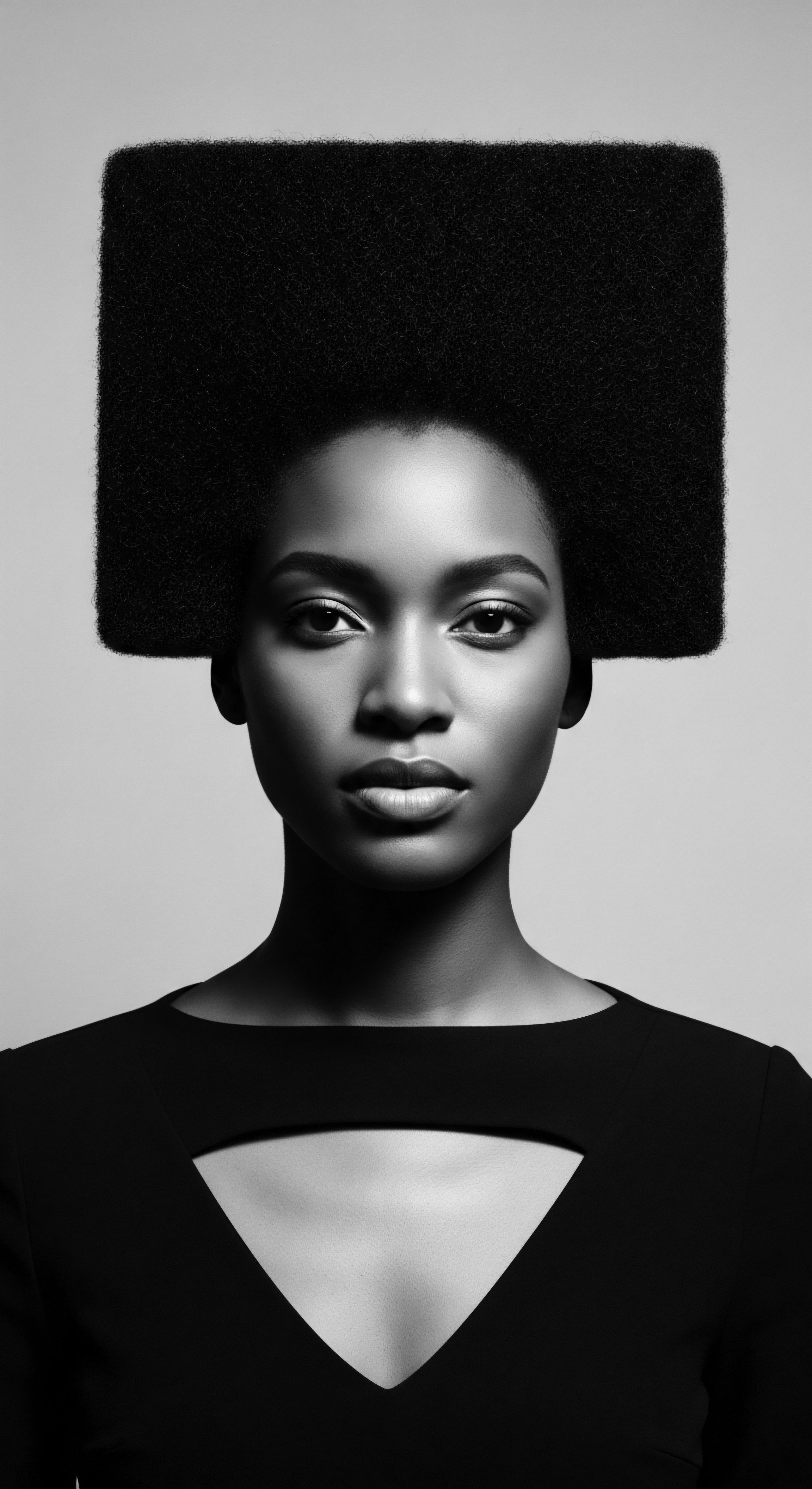
Interconnected Incidences ❉ Beyond the Relaxer
The meaning of scalp irritation also intersects with other complex issues prevalent in textured hair care.
- Traction-Induced Inflammation ❉ The artistic versatility of textured hair lends itself to an array of protective styles such as braids, weaves, and extensions. While these styles serve functional and aesthetic purposes, their improper installation can induce significant traction on the hair follicles, leading to inflammation and irritation. This mechanical stress can cause a localized inflammatory response, culminating in Traction Alopecia, a condition of progressive hair loss that begins with follicular inflammation and often presents as persistent scalp irritation and tenderness along the hairline or at points of maximal tension. The chronic nature of this irritation, if left unaddressed, eventually results in irreversible follicular damage.
- Product Formulation and Allergens ❉ The market for textured hair products has historically been saturated with formulations containing high concentrations of fragrances, preservatives, and other potential irritants. These chemical sensitizers can elicit allergic contact dermatitis, characterized by intense pruritus, erythema, and vesicle formation on the scalp. The historical lack of culturally competent product development meant that consumers were often left to experiment with formulations not optimized for their specific needs, thereby increasing their exposure to allergens and irritants.
- Psychosocial Determinants of Scalp Health ❉ Beyond direct physical causes, the psychosocial dimensions of hair care cannot be overlooked. Stress, a known exacerbator of dermatological conditions like seborrheic dermatitis and psoriasis, can amplify scalp irritation. The emotional burden of hair discrimination, the pressure to conform to narrow beauty standards, and the psychological impact of hair loss contribute to chronic stress, thereby indirectly exacerbating inflammatory scalp conditions. The meaning of scalp irritation here extends into the realm of mental and emotional well-being, reflecting deeper societal pressures.

The Pathophysiology of Chronic Irritation and Long-Term Outcomes
From an academic vantage point, chronic scalp irritation in textured hair is a complex inflammatory cascade. Sustained exposure to irritants or mechanical stressors triggers the activation of keratinocytes and immune cells, leading to the release of pro-inflammatory cytokines such as TNF-α, IL-1β, and IL-6. This inflammatory milieu disrupts the epidermal barrier, increasing transepidermal water loss and making the scalp more vulnerable to microbial invasion and further irritation. In the context of recurrent trauma from chemical relaxers or excessive traction, this chronic inflammation can eventually lead to fibrotic remodeling of the dermis and destruction of the hair follicle, resulting in irreversible scarring alopecia.
The long-term consequences extend beyond aesthetic concerns; they encompass psychological distress, diminished quality of life, and a perpetuated cycle of seeking ineffective or harmful interventions due to a lack of informed guidance. The academic elucidation of scalp irritation thus calls for interdisciplinary approaches that combine dermatology, toxicology, anthropology, and public health, acknowledging the profound and multifaceted impact of historical and cultural practices on the biological integrity of the scalp. The quest for meaningful solutions must be rooted in this comprehensive understanding, honoring the lived realities and ancestral heritage that define the textured hair journey.

Reflection on the Heritage of Scalp Irritation
As we draw this meditation to a close, the enduring meaning of scalp irritation reveals itself not merely as a medical condition but as a testament to the ongoing conversation between our ancestral past and our contemporary selves. For those graced with the majestic coils and textures of Black and mixed-race hair, the journey of scalp wellness is profoundly woven into the very fabric of their heritage. It is a dialogue that speaks of resilience, of adaptation, and of the unwavering spirit that has transformed challenges into opportunities for deeper understanding and care.
The history of scalp irritation, from the subtle itch of ancestral environments to the profound traumas inflicted by colonial beauty standards, illustrates a continuous thread of experience. Our forebears, with their intuitive wisdom, often sought harmony with the earth, finding solace and healing in the botanicals and rituals passed down through generations. These practices, once viewed as simple remedies, now find validation in modern science, revealing the timeless efficacy of nature’s embrace. We recall the nourishing oils, the soothing clays, the gentle detangling, all informed by a profound respect for the scalp as the sacred ground of growth.
Today, this inherited wisdom continues to illuminate our path. The discomfort of scalp irritation, though sometimes a physical burden, becomes a powerful catalyst for reconnection—a call to listen more intently to our bodies and to the quiet whispers of our ancestral lineage. It invites us to question, to seek out practices that honor our unique hair textures, and to reclaim narratives of beauty that are rooted in health, authenticity, and self-acceptance.
The experience of scalp irritation, then, is an invitation to holistic care, acknowledging that true wellness extends beyond superficial solutions. It speaks to the ongoing process of healing, both individually and collectively, as we unravel the societal pressures that have sometimes led us astray from the most nourishing paths. Our collective hair journeys, marked by both joy and challenge, remind us that the scalp, as the very foundation of our crown, deserves reverence, patience, and a care regime that understands its intricate connection to our history, our identity, and our boundless spirit. The Soul of a Strand, indeed, begins with the vitality of the scalp, a legacy we are destined to nurture and celebrate for generations to come.

References
- McMichael, Leslie A. and Heather Levy. “Dermatologic Issues of Hair Care in Women of Color.” In Treatments for Hair Loss, edited by A. Tosti and A. McMichael, 127-142. Springer, 2014.
- Dawber, Rodney P. R. and Kevin P. G. Harris. Hair and Scalp Disorders ❉ Common Problems and Their Management. 2nd ed. Blackwell Science, 2002.
- Braxton, Joanne M. Sometimes the Soul ❉ From Black Folk to American Culture. University of Illinois Press, 2011.
- Collins, Patricia Hill. Black Feminist Thought ❉ Knowledge, Consciousness, and the Politics of Empowerment. 2nd ed. Routledge, 2000.
- Hooks, Bell. Ain’t I a Woman ❉ Black Women and Feminism. South End Press, 1981.
- Wigley, Catherine B. The Complete Book of African Herbs. Black & White Books, 2002.
- Burg, Gunter, and J. R. Happle. Dermatology. Thieme, 2006.
- Taylor, Monica L. Hair, There, and Everywhere ❉ The Cultural History of Black Hair. University of California Press, 2020.
- Ogunwole, Stella N. The African American Journey. U.S. Census Bureau, 2005.
- Nordstrom, E. A. Ethnopharmacology of Cosmetic Preparations. CRC Press, 2019.
